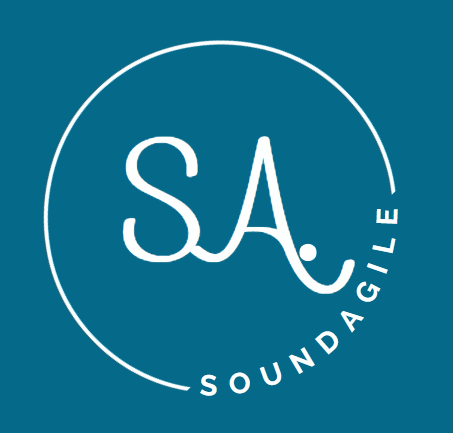I’ve been working through some things in my recent engagements, one where I worked with some awesome coaches and another where coaches were not deeply experienced with Agile.
The differences in the success of implementation were fairly stark, with one having highly engaged coaches working collaboratively to refine the challenges with the organization’s framework, making thoughtful changes that moved the organization forward while keeping the intent and outcomes in place.
The other was disjointed and fragmented with the focus on the framework being right and attempting to fit the framework into the organization over the other way around. The coaches in this situation were rigid in their belief that the framework is implemented as defined by the framework, which is a circularly blind logic that completely leaves out the organization in the approach.
This got me thinking about Agile and how I view it based upon almost 20 years of working in Agile, primarily as someone involved in developing and delivering software products and more recently in the past 7 years as an Enterprise coach.
From my perspective, I see 3 aspects of what many think of when they hear the word Agile.
1. Agile Manifesto — This is the base for the Agile movement across the world. It laid the foundation for how we want to approach working via its 4 Values and 12 Principles. Within these, we find the foundations for how we want to work which has resulted in the development of a myriad of frameworks designed to take the Manifesto and ‘operationalize’ it for people to work within.
2. Agile Frameworks — These come in all flavors and often have ardent followers who often believe that the Framework rules everything we do. Where the Manifesto was not prescriptive the frameworks often are or are implemented from that perspective. This rigidity of implementation stems I think primarily from the certification factories that have been turning out certified Scrum Master, Product Owners, Release Train Engineers, so on and so on….
The danger with the certification process is that implies to unsuspecting hiring companies that these people have some deep understanding of ‘x’ framework and this couldn’t be further from the truth.
Worse many coaches in our industry have gone out and paid for a bunch of certifications yet have zero experience working in Agile and can not provide any supportive coaching regarding implementation of the framework due to this glaring knowledge gap.
Unfortunately, the demand for Agile coaches to support Agile Transformations is high and continues that way, in order to hire coaches organizations will check the box for certifications and move forward, with often disastrous results.
A critical danger that organizations who want to move to Agile face are that if you get it wrong by hiring people with no Agile experience you are not likely to be successful resulting in leadership blaming Agile but in reality, it is the people hired to help you be Agile who are at fault. You often have one shot at gaining confidence in Agile.
3. Agilist — These are the more rare individual in the Agile world, those who have both worked in Agile in often many different roles and then have gone on to coaching. My background includes having been a Scrum Master (before certifications were a thing), Product Owner, Tester, Agile Evangelist within the organization to leading a Transformation organization.
It is these real-world experiences that you want your coach to have as they take the approach of understanding your organization and then applying the appropriate approach for that moment in time.
Agilsts are not tied to a specific framework and we look at them as things we can leverage as part of the overarching goal of helping the entire organization become Agile, not just adopt Scrum, which is focused solely at the development team level.
I often describe my approach as that of being a chef with lots of spices (frameworks) and picking the parts of each that make the most sense for where the organization is at. Trying to implement SAFe into a free-spirited startup will likely fail, but if you hire SAFe certified coaches they will come in and implement SAFe. Their hammer is SAFe and every organization looks like a nail to them.
Agilsts question everything and seek new ways of working that provide the right context and direction for the organization to be successful.
If you are thinking about starting an Agile Transformation these are things you need to consider. Seek Agile coaches who can provide real-world examples of how they both challenged the organization in their thinking and helped them see new ways of working that lead to successful outcomes.
Coaches who are Agilists will often have the certifications as they open doors for us, but they are not the driver of how we think of how an organization can become truly Agile. Simply selecting a Framework and adopting that gets you only so far in the goal of changing the organization to a new normal.

